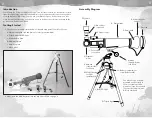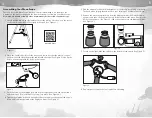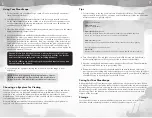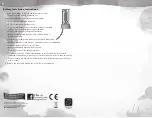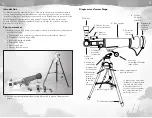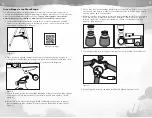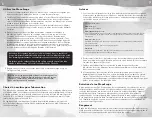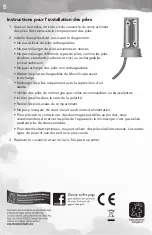
2
3
Introduction
Your Nancy B.’s Science Club MoonScope™ is a refractor telescope. A refractor collects
light through a large objective lens and directs it through the telescope to the eyepiece
for magnification. Of course, you can use your MoonScope to look at the moon, but
since it’s really a telescope, you can also use it to look at other objects in the night sky
as well as objects here on Earth.
Getting Started
1. First, use the list and pictures below to identify each part of your MoonScope.
a. Optical tube with rack and pinion focuser (pre-assembled)
b. Tripod with red LED light
c. Altitiude lock knob
d. 20mm eyepiece
e. 4mm eyepiece
f. Moon filter
2. Next, load two AAA batteries into the tripod as shown on page 8.
Assembly Diagram
a
b
c
d
e
f
A. Optical tube
B. Objective lens
(inside)
C. Dust cap
D. Dew shield
E. Finder scope
G. Moon filter
(optional)
F. Eyepiece
H. Diagonal
mirror
I. Focuser/
focus knob
O. Tripod legs
J. Altitude
(up-and-down)
lock knob
K. Azimuth
(side-to-side)
lock knob
L. Red LED light
M. On/off button
for light
(underneath)
N. Battery compartment
screw (underneath)
The MoonScope is shown
mounted on the tripod in
the more stable position.
However, it can be reversed
if you wish to view objects
directly overhead.


